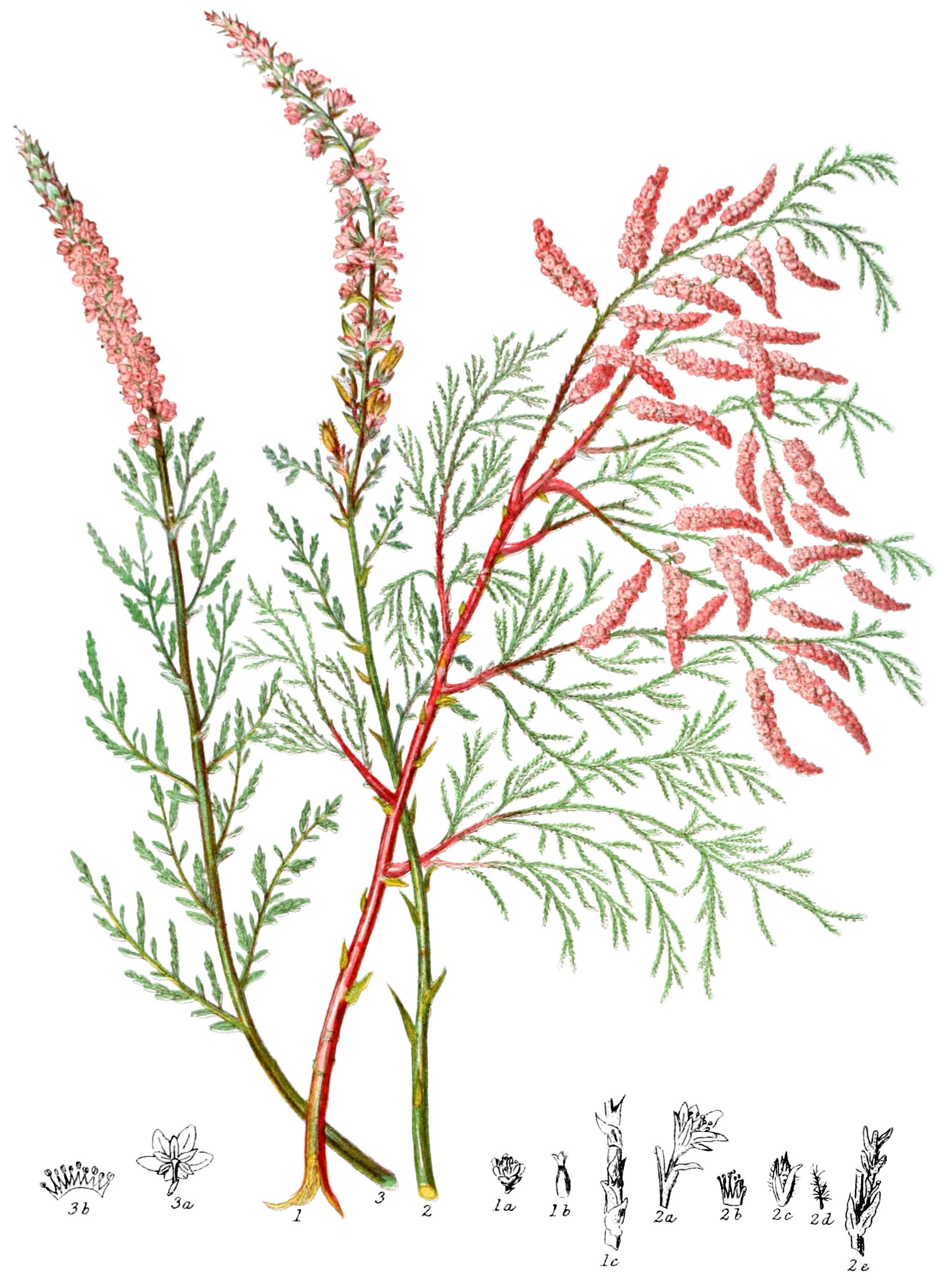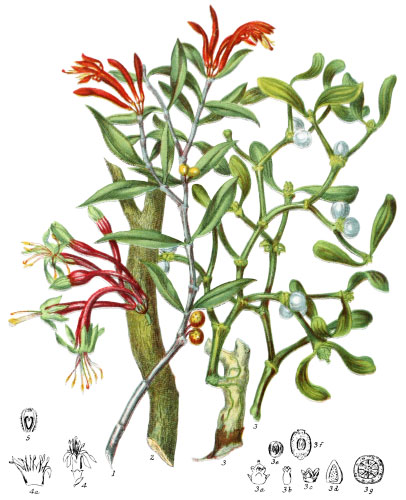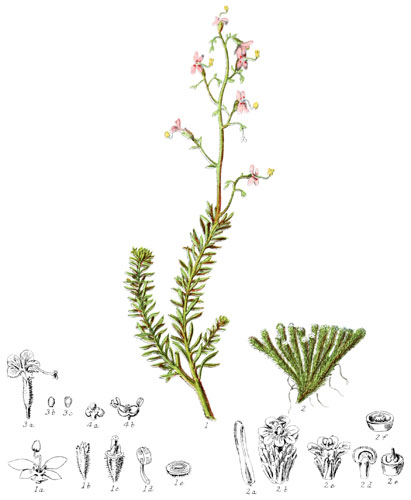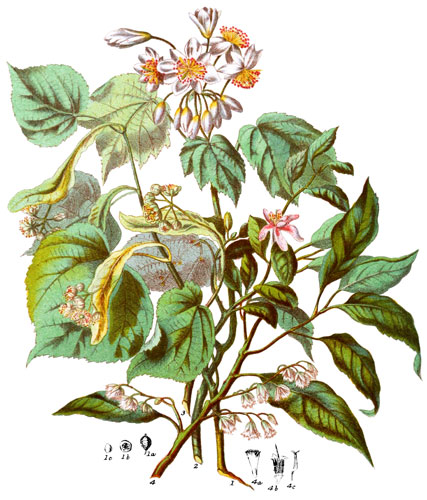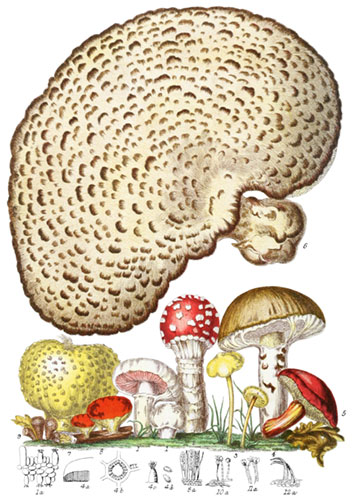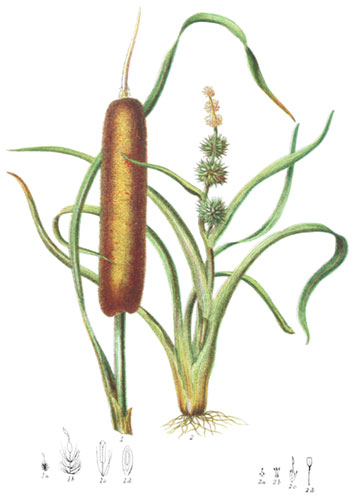Key characteristics
Shrubs or herbs, with slender branches; leaves alternate, minute, entire, scale-like, usually having hollows on the surface. Flowers in close spikes, or racemes. The calyx is four or five-parted, persistent, imbricated in the bud. Petals inserted into the base of the calyx, withering and remaining whilst the seed ripens. Stamens either equal in number to the petals, or twice as many, distinct or united: the anthers are turned inwards, two-celled, opening longitudinally. The ovary is free, surmounted by three styles. The Fruit is a capsule, three-valved, three cornered, one-celled, containing many seeds attached to three plates, either at the base of the cavity, or along the middle of the valves; the seeds have no albumen, and are surmounted by down.
Bitter and astringent properties exist in the plants of this innocuous tribe; sulphate of soda is contained in the ashes.
Select plants in this order
Not all plants listed are illustrated and not all plants illustrated are listed.
- Tamarisk is supposed to have received its name from the Tamarisci, who in ancient times inhabited the Spanish side of the Pyrenees, where it grows plentifully on the banks of the Tanaris. Saline air or soil is essential to the growth of the different species.
- T. gallica (1) is now become naturalized in England, and may frequently ben seen on the south coast, being almost the only shrub that grows well in gardens exposed to the spray of the sea; when protected by a wall or house it attains the height of twenty or thirty feet, and has a stem upwards of twelve inches in circumference. The flowers are abundant in warm situations, coming forth in June and September; in mild parts of the Hampshire, Sussex, and Cornish coast, it flourishes as luxuriantly as in its native country of Normandy, where it is particularly beautiful along the road from Pontorson to Mont St. Michel, forming high hedges with its elegant branches adorned with pink flowers, to the extreme edge of the sands. In former ages it would not have been found there, but it sprang up in its appointed time and place, when the salt waves had taken possession of the wide tract of meadow and forest, and the poor monk on returning from a pilgrimage beheld in amazement a vast barren sand intervening between him and his monastery on the rocky mount.
- The twigs of T. gallica and T. Africana are considered slightly tonic, the ashes of both yield a remarkable quantity of sulphate of soda.
- The celebrated Manna of Mount Sinai was discovered by Ehrenberg to be an exudation from T. manifera, caused by a small insect of the Coccus tribe,* which sometimes covers the larger branches; the substance contains no crystallisable Mannite, but consists entirely of pure mucilaginous sugar—a singular fact in plants which grow only in saline situations. Persian Manna is derived from another species.
- The steep water-crouses of Pesheen in Beloochistan are as favourable localities for Tamarisk as the shores of Europe; in Delhi and other parts of India T. indica, T. dioica, T. Furas, and T. orientalis are all valued for their astringent qualities both in medicine and in dyeing.
- T. articulata is a native of Egypt.
- Myricaria is so called after the treek name of Tamarisk, from which it differs only in a few points; it is dispersed in Europe and Asia.
- M. Germanica (2) is a small shrub growing on the banks of Alpine rivers and streams in Silesia and Moravia, and among the Hartz mountains; it is well adapted to English gardens, making a pleasing contrast with larger and brighter foliage; it was formerly employed medicinally on account of its astringent balsamic bark.
- M. bracteata (3) belongs to the salt districts of Kunawur in the Himalaya; the bracts at the base of the flower-stalks fall off when the flowers expand.
- M. elegans is also a native of that country.
- M. herbacea affords a kind of tea to the Mongols, as well as tonic medicine.
Locations
The plants of this small Tribe are limited exclusively to the eastern portion of the northern hemisphere, extending from China to the Cape de Verd Islands and Senegambia; apparently not reaching southwards beyond 8° or 9° of N. latitude, or northwards beyond 55° in Siberia. They occur in various localities, on the sea-coasts and river-shores of Europe, on the banks of the Ganges and the Nile, on the arid sandy tracts of Northern India and the Punjaub, and on the lofty saline plains of Thibet and Siberia. They exist in the greatest variety and abundance in the region of the Mediterranean Sea.
Legend
- Tamarix Gallica, French Tamarisk. South Coast, England.
- Flower.
- Ovary and Pistil.
- Branch and Leaves.
- Myricaria Germanica, German Tamarisk. Germany.
- Flower.
- Stamens and Pistil.
- Seed-vessel.
- Seed.
- Branch and Leaves.
- Myaricaria bracteata, Bracteated Tamarisk. Himalayas.
- Flower.
- Stamens.
*The Coccus tribe was not in either of the original two volumes.
Explore more
Posters
Decorate your walls with colorful detailed posters based on Elizabeth Twining’s beautiful two-volume set from 1868.
Puzzles
Challenge yourself or someone else to assemble a puzzle of all 160 botanical illustrations.
